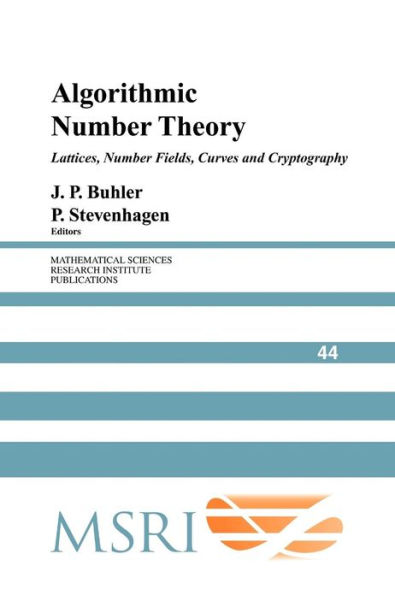5
1
9780521208338


Algorithmic Number Theory: Lattices, Number Fields, Curves and Cryptography available in Paperback

Algorithmic Number Theory: Lattices, Number Fields, Curves and Cryptography
- ISBN-10:
- 0521208335
- ISBN-13:
- 9780521208338
- Pub. Date:
- 07/14/2011
- Publisher:
- Cambridge University Press
- ISBN-10:
- 0521208335
- ISBN-13:
- 9780521208338
- Pub. Date:
- 07/14/2011
- Publisher:
- Cambridge University Press
71.99
In Stock

Product Details
| ISBN-13: | 9780521208338 |
|---|---|
| Publisher: | Cambridge University Press |
| Publication date: | 07/14/2011 |
| Series: | Mathematical Sciences Research Institute Publications , #44 |
| Edition description: | Reissue |
| Pages: | 664 |
| Product dimensions: | 6.14(w) x 9.21(h) x 1.34(d) |
About the Author
From the B&N Reads Blog
